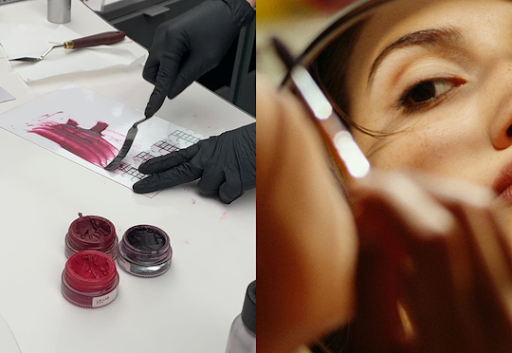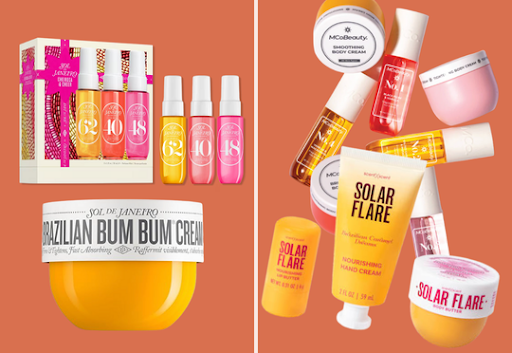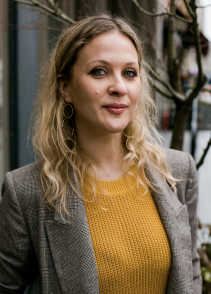Dupe Culture
Remember when Charlotte Tilbury’s Glowgasm Beauty Wand caused the internet and beauty community to collectively—and breathlessly—stir about its life-changing powers? Tilbury held the exclusive formula rights for years before her contract manufacturer was able to sell it to other brands, perhaps with e.l.f. being the most visible mass-manufacturer to chase the market demand for the liquid cream product that doubles as both a blush and a highlighter.

Tilbury’s Glowgasm and Hollywood Flawless Filter, a glowy complexion base product, have become the symbols not only of market success but something a tad more culturally controversial too. Dupe culture. In our current consumer culture, getting a deal is a point of pride, just as not being manipulated or taken advantage of is in equal measure. Dupe culture is a response to this consumer behavior, particularly in this current beauty market where the typical consumer is highly informed, whether about ingredients, their own skin needs or brand segmentation, and particularly about the expectation that something better for cheaper exists in our hyperproductive beauty market.

Brands, meanwhile, can (and have) profited greatly from this competition-driven landscape, offering a range of price points that guide consumer behavior, which also now demands high-performance products at different pricing tiers. In reality, most of us shop both in the high and low categories, and brands know this.
If we consumers shop both drugstore and luxury products, how do we choose which to buy where? That’s entirely personal, naturally, but it leads to the question of “is there a difference?” between the two categories—beyond the obvious, i.e. in packaging and marketing. It’s true that brands spend upwards of 40% on marketing (source) while allocating about 5-10% to product development; and one reason a popular perception persists that luxury brands have the same product as drugstore or mass market, just dressed up fancier.

Traditionally, a product is considered luxury either because of its brand positioning or, quite literally what it’s made of, including rare or expensive ingredients and its cosmetic elegance (how it feels to apply or when using). There are, of course, recent examples that subvert these conventions, such as the $160 Louis Vuitton lipstick that is more a collector’s item than a workhorse product. Many luxury products that get duped do in fact have more elegant formulations or delivery systems than their dupe counterparts. But the truth is, the emergence of dupes isn’t just a conversation about price point difference but rather, a facet of how the industry operates.

We’re seeing the rise of dupes beyond just the consumer demand, reflecting the moves made between brands and manufacturers. Brands work with contract manufacturers (CM), the companies that develop and produce formulations, to create the products for market. As Sophie Thall, of Somer Street Beauty told beautíMod in our Ask An Expert series, “If a brand buys one of these formulas, and its exclusivity period ends, you will notice a lot of other brands will end up having very similar formulas out there on the market in the following years.” After all, the popularity of a hot/viral luxe product inspires competition across brand tiers.

Then there’s the case of the conglomerates, like the L’Oreal and Estée Lauder, who have in-house product development and manufacturing facilities, and thus create various iterations of a formula across their own brands that range from luxury to drug store. Perhaps the most famous rumored dupe (allegedly) is $12 L’Oreal Paris True Match Lumi Foundation for the Giorgio Armani Luminous Silk Foundation ($70). How is that possible? Word around the industry (and take that as rumor and not verified information) is that these large beauty conglomerates, who use the same labs and factories, share base formulas across their product lines and then tweak ingredients, percentages and application-feel (and packaging) to fit each brand’s scope.

Contract manufacturers also spend years developing new technologies they integrate into formulas. Notice how both the Asian and Western beauty markets are flooded with new lip products, from pigmented oils to glow balms? Across the industry, CMs have developed new emulsifying and skincare integrations for the lip category (source), and thus a flood of cosmetic and elegant lip products hit shelves from brands like Tarte to Laneige to Naturium to Ole Henriksen. When techniques and innovations become available cross-industry, the market gets flooded with that type that then gets attributed to the first-to-market formula. Laneige’s Lip Sleeping Mask is a good example of its availability in both Asian and Western markets, as the prototype for the “glow balm” phenomenon we are in.
This new reality of manufacturing and consumer behavior has led to an increasing pressure to deliver growth and protect margins, thus many beauty companies are becoming risk-averse. Rather than investing in novel technologies or new ingredient systems, brands often recycle base formulas, relying on packaging, storytelling, and trend-driven marketing to create a sense of “newness.” That erosion of market distinction narrows the gap between mass and prestige, which in the end, really strengthens the fervor for dupes.
-

Julie Baumgardner, Head of Editorial
Julie Baumgardner is a culture writer, editor and journalist who's spent nearly 15 years covering all aspects of contemporary life from publications like Bloomberg, Cultured, Financial Times, New York Magazine, The New York Times, Wall Street Journal. Find her @juliewithab
What are your thoughts? Add a comment to start the conversation and don't forget to follow us @beautíMod and join our newsletter list to stay up to date on all the exciting content and conversations we have in store for you.


%5B1%5D.png)
%5B1%5D.png)
%20.png)
.png)
%20-%20tariff.png)

Comments (0)